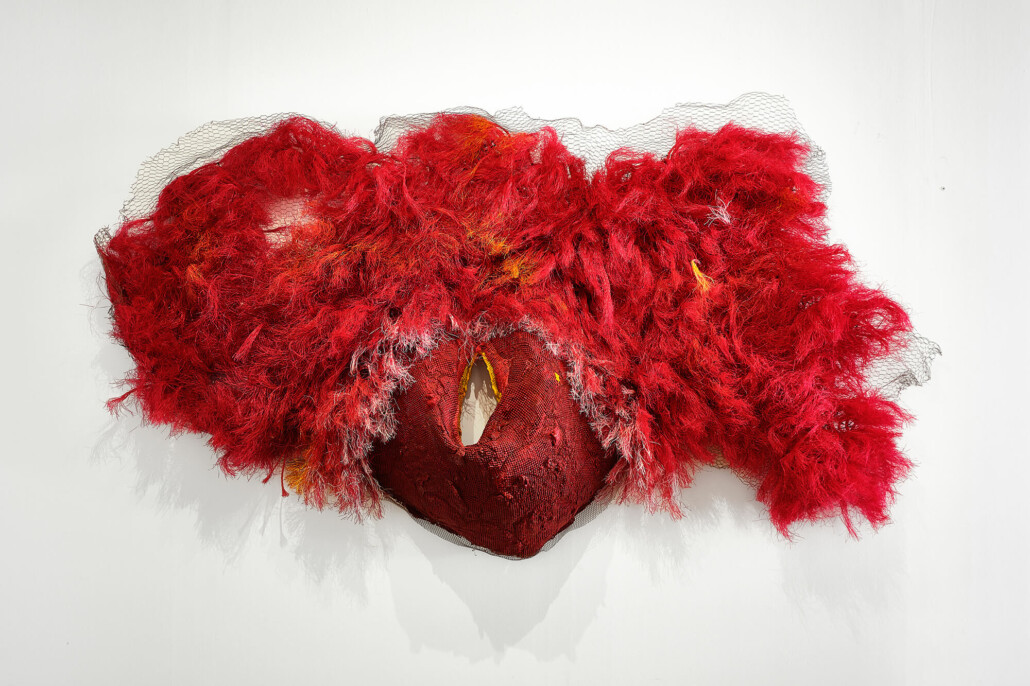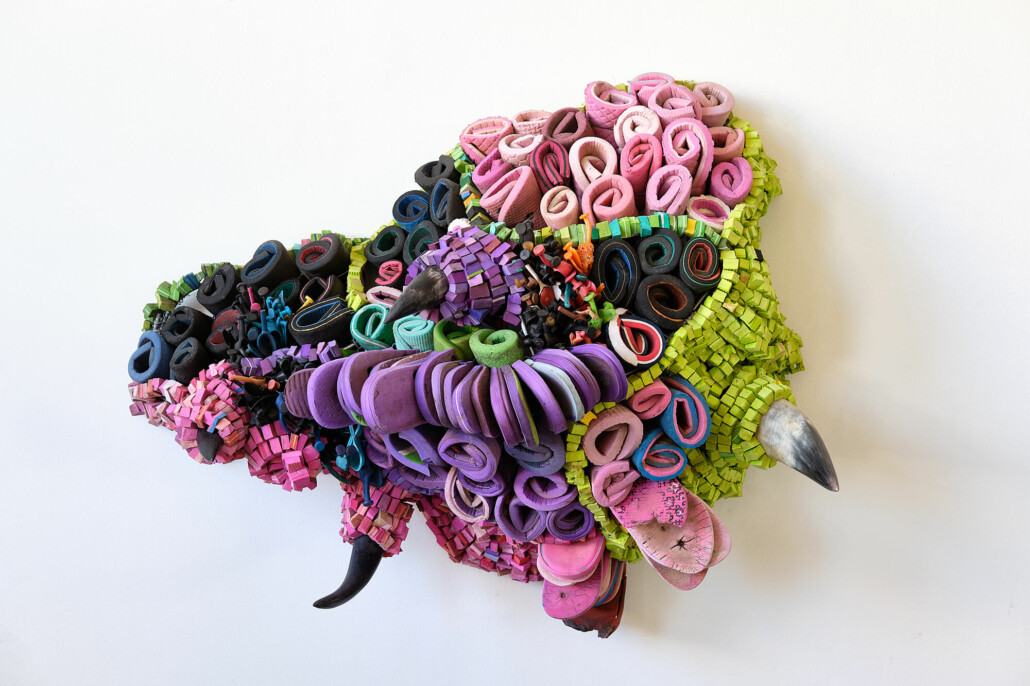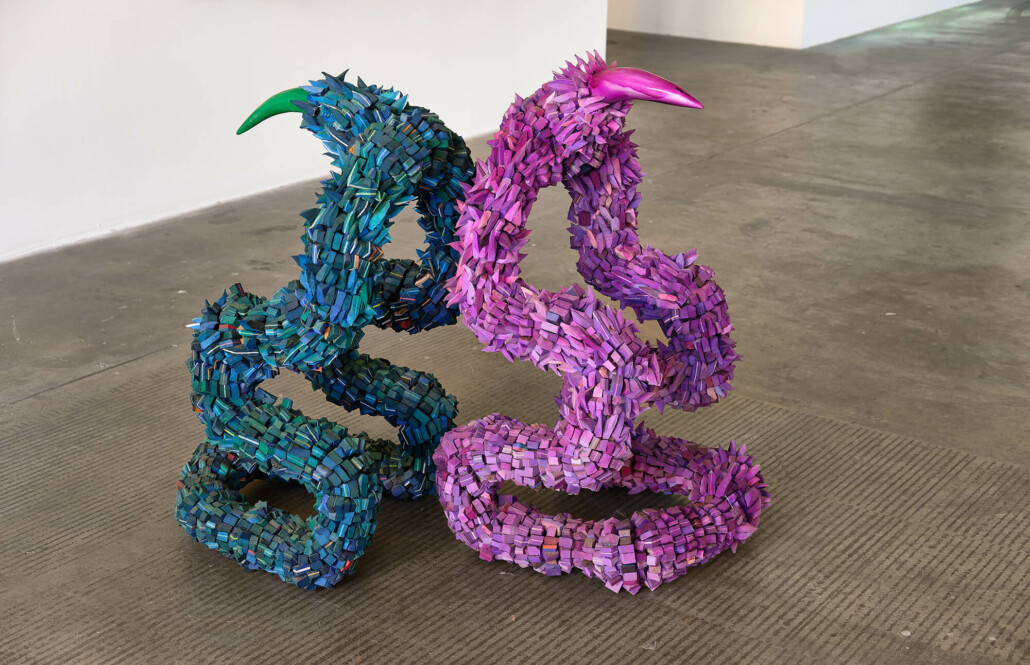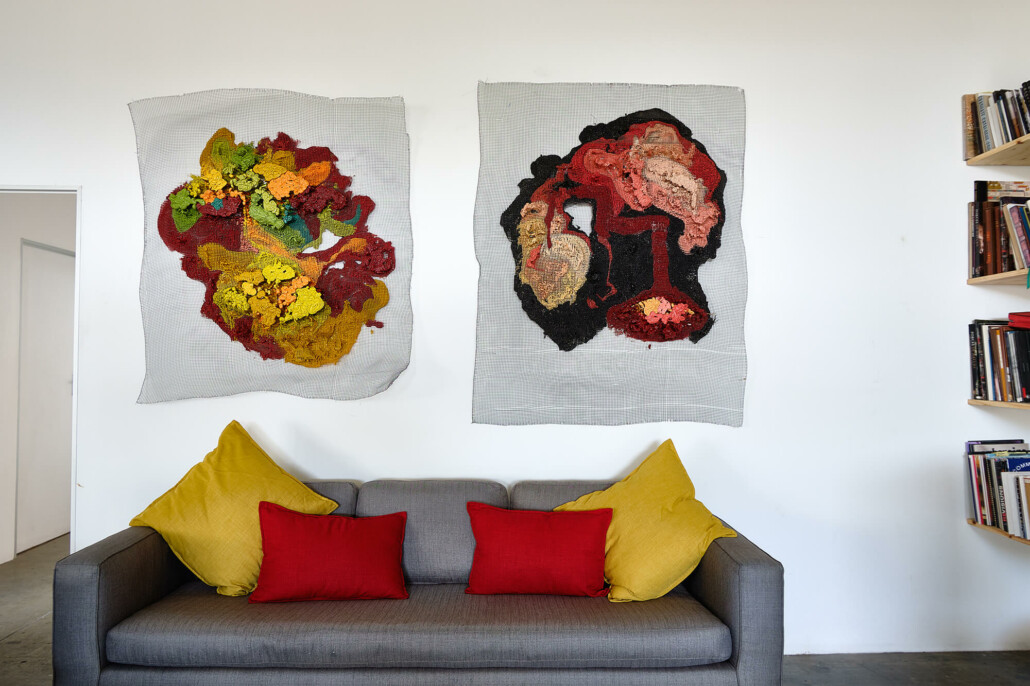The private view of works by two Zimbabwean artists, Julio Rizhi and Takunda Billiati – installed in the Cape Town Art residency in Woodstock – is worth the privilege. The sculptural relief works, made of recycled waste, speak to the governing theme in our nihilistic time – Anthropocene – a time in which Man vainly makes the earth in His image and has destroyed it.

Plastic, mesh wire and spray paint. Photographer: Nicole Clare Fraser. © Julio Rihzi
These Zimbabwean artists’ response is to re-purpose the waste into carbuncular detrivores, creatures of the desert with an uncanny capacity for survival. One cannot ignore the anthropocentric nature of the sculpture – they are imitative and strangely organic, despite their polymer origin. I’ve described them as plastiglomerate – creatures made up of aggregated waste, inorganic-yet-organic, which speak to the unerring survival of other subterranean species, despite Man’s nihilistic bent.
Arte Povera is the decisive aesthetic influence, but its African transubstantiation makes it miraculous because African artists don’t merely retool waste. They transmogrify its inessential and wasteful character and edify a shocking moral wrong. El Anatsui is the grandmaster in this regard, but his influence across the African continent has proved profound.


Installation view of Takunda Billiati work, Cape Town Art Residency. Flipflops, rubber, wire and cow horns. Photographer: Nicole Clare Fraser. © Takunda Billiati
In the case of Julio Rizhi and. Takunda Billiati what immediately announces itself is volume – the works operate as outgrowths from a supporting white plane. They are either vividly loud or enshrouded in mesh and, as such, express the exposed and hidden nature and beauty of waste.
The question, today, is no longer if we are the prosthetic extensions of things or vice versa, but what is the fallout of our destructive practices. If Man is bonded to nihilism, can he redeem himself? I doubt it. And if I have deliberately chosen to speak of Mankind instead of Humankind, it is because it is men, specifically, who have engineered our destruction.

Installation view of Julio Rhizi’s work, Cape Town Art Residency. Photographer: Nicole Clare Fraser. © Julio Rihzi
However, in the case of the artists and artworks, which are my primary focus, it is not nihilism as a rude awakening that announces itself but the elegant beauty of organic forms. The desert detrivore is my metaphor for this survivalist energy, this mystique of endurance. The works are irresistibly attractive – strange attractors.
Ashraf Jamal is a Research Associate in the Visual Identities in Art and Design Research Centre, University of Johannesburg. He is the co-author of Art in South Africa: The Future Present and co-editor of Indian Ocean Studies: Social, Cultural, and Political Perspectives. Ashraf Jamal is also the author of Predicaments of culture in South Africa, Love themes for the wilderness, The Shades, In the World: Essays on Contemporary South African Art, and Strange Cargo: Essays on Art.



